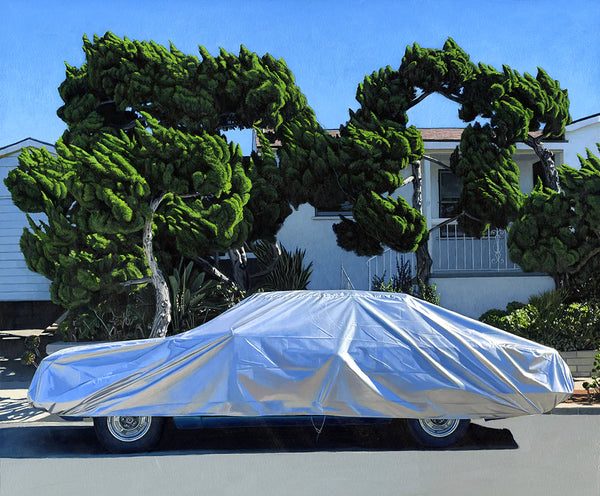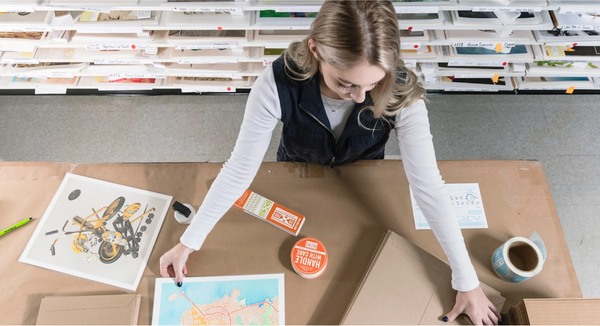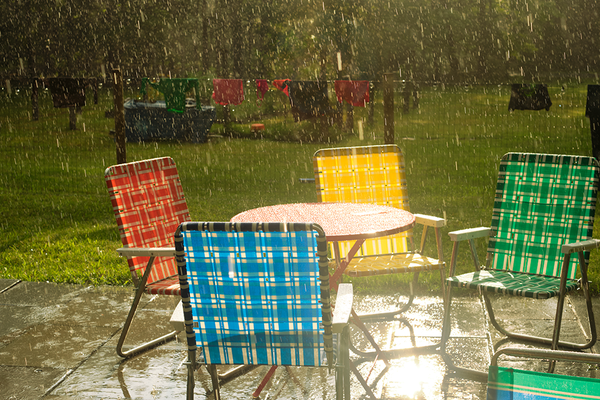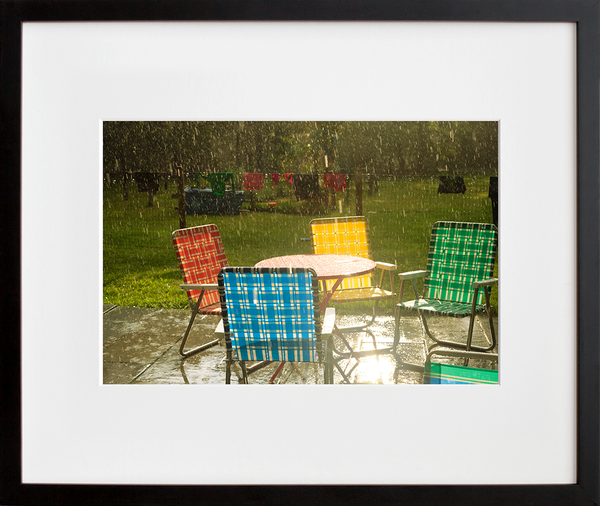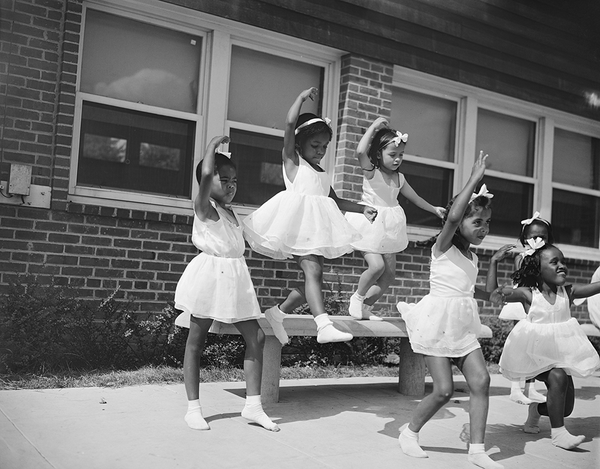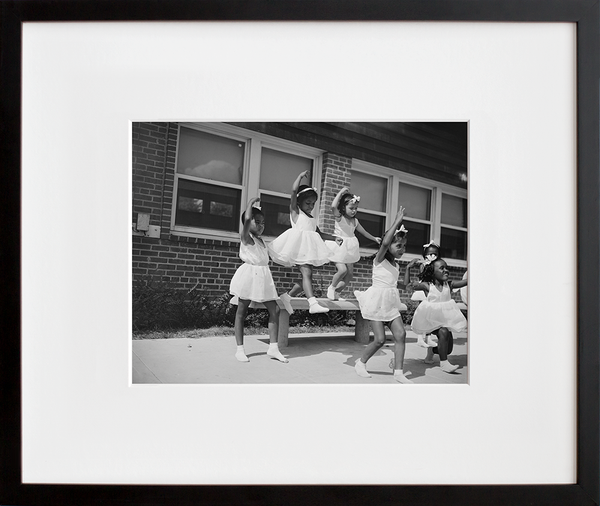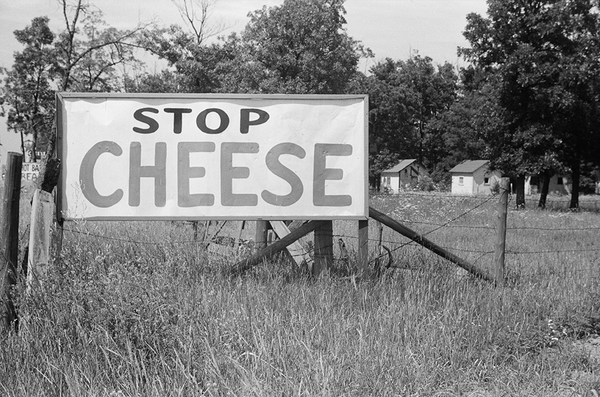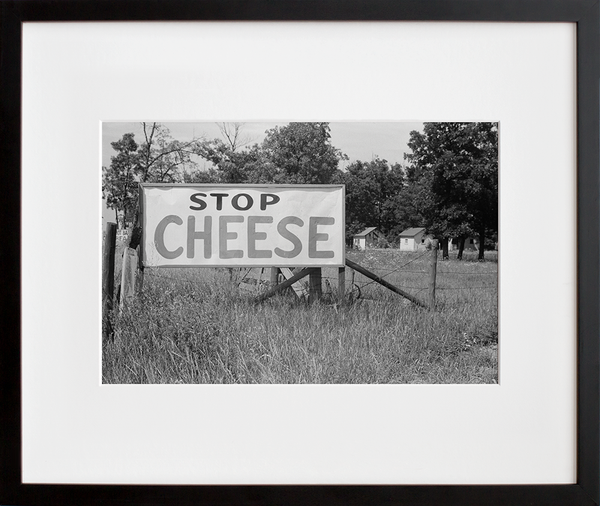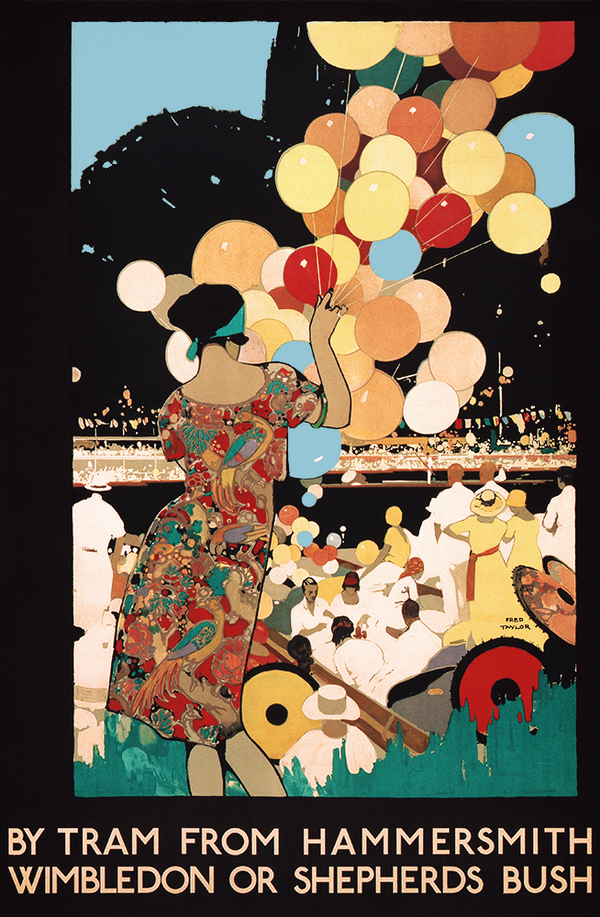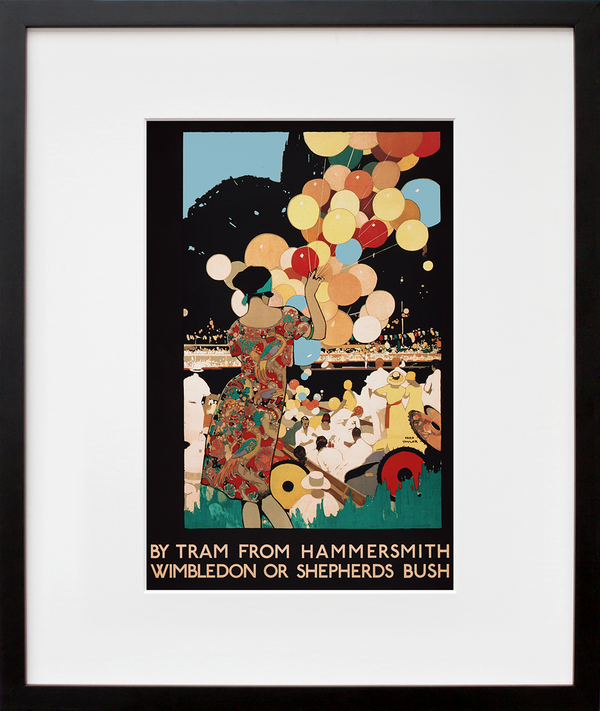Painters, photographers, sculptors, and artists of all stripes who create static images and objects know one thing: those images and objects can't FEEL static. They must be dynamic, alive, and connect to the viewer on a visceral level. Even in a captured moment of stillness, motion before and after that moment must be implied.
The line between implying time in a work and motion in a work is permeable, but present—one could argue that the latter implies the former. And where is something if it is not in time, in motion? The more we dug into the concept, the more we wanted to share with you. Here are just a few of our editions that beautifully exemplify the application of this essential element in any successful work of art.
Originally painted in the 1930s by Joseph Vogel, Forward pass is an excellent example of the artist’s wheelhouse. Broad brushstrokes and bold, isolated hues create a color-driven composition. Vogel’s expressive, abstract style evokes the enthusiasm and excitement of the game. The three players are almost balletic in their posture, but their oversized hands and broad shoulders hint at their brute force. The field, flags, and distant goal post take a backseat to the dynamic dance frozen in the fore. This seems to be a scene of near success, the Quarterback hoisting the ball high out of reach, an offensive lineman (at bottom) blocking a tackle. Since these figures are faceless, this isn’t a nod to individual victory. Rather, it’s a triumph of teamwork, and an homage to the artfulness of athletic improvisation.
Gung Ho Go taps into body language to tell a story, punctuated by exaggerated hues. Originally drawn in colored pencil, the print’s chunky swaths of blues, greens and grays inflected by peachy pink and pastel yellow portray the fluctuating palette and undulating surface of the ocean with a wash of playfulness and go-with-the-flow placidity. The airborne surfer spotlighted over the crest of a wave is positioned in such a way that they appear both alertly present in the moment, and totally free. Facing the foaming edge, their hand and feet are flexed, but their posture seems loose and pliant. A zip of yellow emphasizes the energy of the moment. Riding a wave means accepting what you can’t control, taking a spill in stride, the falling figure seems to suggest.
A perilous ride, a 20x200 Vintage Edition
A perilous ride pictures 18-year-old Will Robertson steering a bike down the steps of the US Capitol while a man named Rex Smith stands at the top. Robertson rides an American Star—a sort of reverse penny-farthing with the small wheel in the front instead of the back, invented by G.W. Pressey only a few years before this photo was taken. The design made the bike a bit safer, preventing the forward-tipping other high wheelers ran into. It was also used in bicycle polo, a game both Roberston and Smith played competitively. In fact, we may be witnessing a pedal-driven duel: Riding down the capitol steps was a popular challenge at the time. It took photographer Harry Platt’s technical prowess to properly capture a challenger without the image blurring. Platt, a popular photographer and photographic innovator, secured a patent for an improved camera shutter in 1892. A perilous ride is credited to Harry Platt and his brothers Jacob and Robert, but it was likely Harry’s improved shutter (ie. faster shutter speed) that produced a clearer photo than previous attempts.
With layers of multiple exposures of firefly activity over a single, exceptionally focused frame of the comet, Comet NEOWISE is a Mauney masterclass on perspective and relativity. Using space and time (and lots of cameras!), Mauney teaches us about the balance of chaos and harmony in our world, compressing time and space to show how much life happens in a single, quiet night both near and far. Mauney invites viewers to stand with him grounded only by the treeline in silhouette, and see all that occurs in those nocturnal hours. And it really is all relative.
Ski Jumper focuses on a sole central skier arms outstretched mid-jump over a sea of snow-capped spruce. The shot is breathtaking, literally. With no ground in sight, our fearless protagonist pauses at his peak adrenaline-powered air. Skarpmoen’s photo is a Wes Anderson-infused freeze frame of an action-packed moment—a symmetrical arrangement reading like an old film strip. The skier stands out in the foreground, while the forest of trees and tiny slanting roofs are seemingly flattened like a backdrop—a technique called planimetric composition and a favorite tool of our pal, Wes. Shot in 1924, Ski Jumper likely owes its crisp clarity to tremendous technical advancements in cameras of the decade allowing for much shorter shutter speeds. This leap (get it?) in photo technology was part of an ongoing pursuit of innovation for capturing high-speed sports.
Muybridge is most remembered for his contributions to the understanding of human and animal locomotion. In 1872, he was hired by railroad magnate Leland Stanford to find the answer to a popular question of the time: whether or not all four of a horse’s hooves leave the ground during a gallop. Muybridge determined the answer by utilizing a series of large cameras. He repeated this practice of stop-motion photography with other animals and people, in effect preceding motion pictures and modern cinema.


